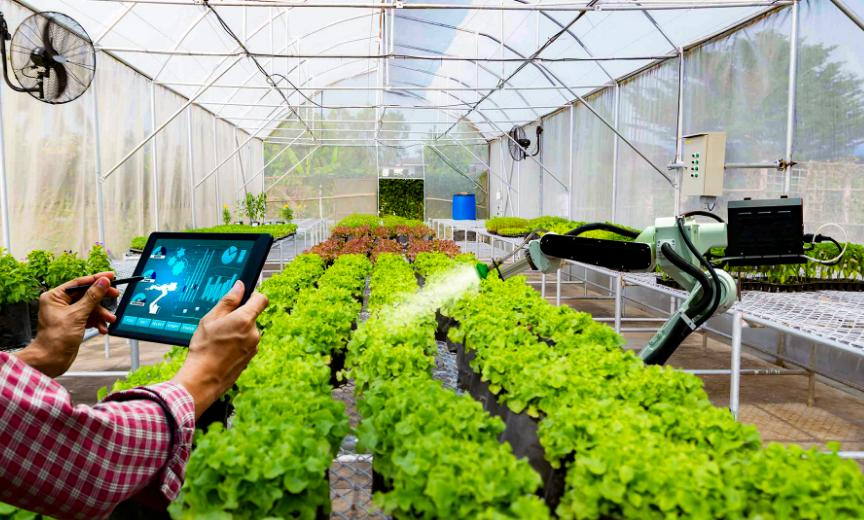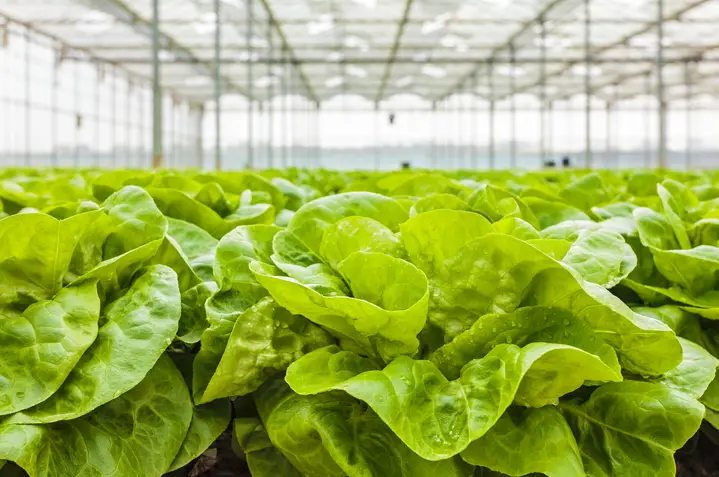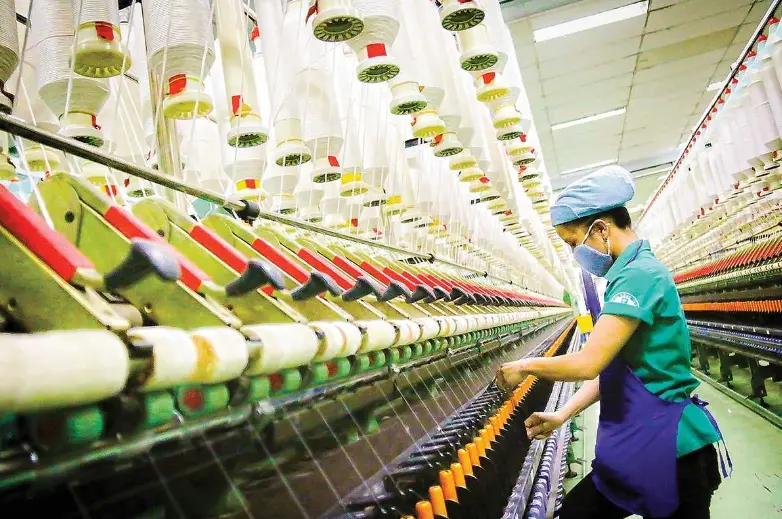Benefits of Green Manufacturing for Businesses and Society
Green manufacturing is a strategic model that integrates environmentally friendly processes and technologies throughout the entire value chain. The goal is to optimize the use of energy and raw materials and minimize waste and pollution, rather than focusing solely on efficiency and profit.
The world is facing urgent and unprecedented challenges: Climate change causes extreme weather events, depletion of natural resources (clean water, minerals) and increasing pressure from consumers and regulatory agencies on corporate responsibility. This strongly promotes the need for a new economic development model: sustainable development.
In this context, Green Manufacturing has emerged as a strategic solution. This is a production model that not only focuses on efficiency and profit but also integrates environmentally friendly processes and technologies throughout the entire value chain. The main goal is to optimize the use of energy and raw materials, while minimizing waste and pollution.
The transition to green manufacturing is not only a responsibility but also a strategy that brings dual benefits, creating sustainable value for both businesses and society.
In this context, Green Manufacturing has emerged as a strategic solution. This is a production model that not only focuses on efficiency and profit but also integrates environmentally friendly processes and technologies throughout the entire value chain. The main goal is to optimize the use of energy and raw materials, while minimizing waste and pollution.
The transition to green manufacturing is not only a responsibility but also a strategy that brings dual benefits, creating sustainable value for both businesses and society.
What is green manufacturing?
Green manufacturing is the process of creating products by "greening" the production process, minimizing negative impacts on the environment, using resources efficiently and reducing waste and pollution to build a sustainable future for the planet and future generations.

Comprehensive benefits of green manufacturing for businesses
Green manufacturing creates a positive cycle of benefits, affecting both short-term financial performance and long-term competitive position of the business.
1. Optimize operational efficiency and reduce costs
This is the most obvious and attractive benefit. When applying green processes, businesses are forced to review and streamline every step in production:
- Reduce input costs: Investing in energy-saving technology (such as solar panels, high-efficiency equipment) and using recycled or renewable materials significantly reduces utility bills and material procurement costs. For example, a factory switching to a closed-loop production process can reuse 80-90% of the water used, saving billions of dong in water and treatment costs.
- Turn costs into assets: Green manufacturing encourages circular economic thinking. Waste is no longer a burden of treatment costs, but is considered a secondary resource that can be sold or recycled back into the production chain.
2. Increase competitive advantage and market share
In an increasingly saturated market, "green products" are a strong differentiator:
- Attract customers: Consumers are increasingly interested in environmentally friendly products. Green products help businesses build positive brands and expand market share.
- Improve relationships with investors and partners: Sustainable businesses (those that do well in ESG - Environment, Social and Governance) are more highly valued, have easier access to capital and attract strategic business partners.
3. Improved brand image and capital attraction
This benefit focuses on the intangible aspect but is decisive for the survival and expansion of the business:
- Meeting legal requirements: Green manufacturing makes it easier for businesses to comply with increasingly stringent environmental regulations, avoiding fines and legal risks.
- Supply chain risk management: Reducing dependence on scarce and volatile resources helps businesses be more proactive in the face of price and supply shocks.
- Safe and meaningful working environment: Employees, especially the younger generation, tend to work for socially and environmentally responsible companies, helping businesses retain high-quality talent.

The far-reaching benefits of green manufacturing for society and the environment
Green manufacturing creates community values that cannot be measured in money, directly affecting the quality of life and the sustainability of the planet.
1. Protecting the living environment
The core goal of Green Manufacturing is to minimize the ecological footprint of economic activities:
- Reducing pollution and emissions: Green processes apply advanced filtration and treatment technology, helping to limit greenhouse gas emissions (CO2, Methane), reduce the amount of untreated wastewater discharged into rivers and lakes, and prevent land pollution from industrial waste. This directly slows down the rate of climate change.
- Conserving natural resources: By prioritizing the use of recycled materials, biodegradable materials, and applying the Circular Economy, businesses reduce the pressure on exploiting scarce resources. This ensures that future generations still have enough resources to develop.
2. Improved Public Health
Improved public health is a direct consequence of a cleaner environment:
- Safer Workplaces: Green manufacturing often involves replacing hazardous chemicals with safer alternatives or implementing strict controls. This protects workers from occupational diseases and toxic risks, creating a sustainable and humane workplace.
- Improved Quality of Life: Reducing air and wastewater pollution in the vicinity of the plant reduces the incidence of respiratory diseases, cancers, and waterborne diseases, thereby saving on health care costs for both individuals and society.
3. Promoting sustainable economic development
Green manufacturing acts as a driver for a high-quality, knowledge-based, and innovation-based economy:
- Creating sustainable jobs: The transition to renewable energy, advanced waste treatment technologies, and sustainable supply chain management creates a strong demand for new, highly skilled jobs (e.g., wind energy engineers, sustainability consultants). These jobs are stable and contribute positively to the value chain.
- Strengthening resource and energy security: Diversification into renewable energy sources (wind, solar) helps countries and businesses reduce dependence on imported fossil fuels, increase self-reliance and national economic stability in the face of geopolitical fluctuations.
- Policy orientation and standards: The success of green businesses creates a premise for the Government to develop and implement supportive public policies (e.g., tax incentives for green technology), thereby promoting the entire industry to transform towards sustainability.
Challenges of green production transformation
The transformation to a green production model faces four main groups of barriers:
1. Financial costs
- High initial investment: High costs to purchase and install modern green technology, machinery, and equipment.
- Expensive materials: Sustainable or recycled materials are often more expensive than traditional materials.
- Lack of concessional capital: Difficulty in accessing green credit sources and long payback periods (ROI).
2. Technology and techniques
- Technology barriers: Difficulty in transferring and mastering advanced clean technologies and integrating them into existing production systems.
- Incomplete supply chains: Lack of local suppliers that can strictly meet green material standards.
3. Human resources and awareness
- Scarcity of expertise: Lack of engineers and managers with expertise in environmental engineering, renewable energy and green supply chain management.
- Uneven awareness: Many businesses still consider green production as a cost burden rather than a long-term business strategy.
4. Legal and market
- Lack of synchronous legal framework: Need to improve standards, regulations and monitoring mechanisms to create a more stable business environment.
- Price pressure: Green products are often more expensive, easily competing with traditional goods.
- Export barriers: Facing new environmental standards and regulations from major international markets.
Examples of green production in Vietnam that bring benefits to businesses, the environment, and society
Example: Circular economy model at Vinamilk
Vietnam Dairy Products Joint Stock Company (Vinamilk) has implemented a green production and sustainable agriculture model at dairy farms, focusing especially on waste treatment and reuse.
1. Green production benefits for the Environment (Circular ecosystem)
| Aspect | Green Production Activities | Environmental Benefits |
| Waste management | Build a large Biogas system to collect and treat all fresh cow manure. | Minimize odors and air pollution on the farm. |
| Reduce Greenhouse | Gas Emissions Methane (CH4) produced from Biogas is recovered and used as boiler fuel. | Significantly reduce CH4 emissions (a greenhouse gas stronger than CO2) and replace traditional fossil fuels. |
| Conservation of Resources | Treated wastewater is used to irrigate pastures, closing the water cycle. | Reduce clean water consumption and protect groundwater resources. |
2. Benefits for Businesses (Double Benefits)
| Impact | Aspect for Businesses |
| Reduce operating costs | Save billions of VND/year by self-supplying energy (gas) instead of buying electricity or oil. |
| Improve efficiency | Biogas waste is used as high-quality organic fertilizer for pastures, reducing the cost of buying chemical fertilizers. |
| Increase brand reputation | Recognized as a sustainable business, attracting customers who prioritize Green products and easily expanding export markets that require high ESG certification. |
3. Benefits for Society
| Aspect | Social/Community Impact |
| Community Health | Reduces pollution in the area surrounding the farm, ensuring a healthier living environment for local people. |
| Product Safety | Clean livestock farming platform, organic grass feed helps ensure the quality and safety of dairy products. |
| Sustainable development | Creates green jobs in the operation and maintenance of Biogas systems, while contributing to the national commitment to reduce emissions (Net Zero). |
This model clearly illustrates that investing in green production is not just about compliance but a smart business strategy, creating a positive ripple effect across the entire ecosystem.

Green Production: From Environmental Responsibility to Sustainable Economic Benefits
Green production is not only an option but has become an inevitable trend and an effective, responsible business model in the 21st century, where profits are created in parallel with sustainable values for the environment and society.
The transition to Green Production brings dual benefits: strengthening competitiveness, optimizing costs for businesses, while protecting the ecosystem, improving public health and contributing to the goal of reducing global emissions. This is a strategy to help Vietnamese businesses move deeper into the global supply chain.
Future orientation and solutions for green production
To realize and accelerate this green transformation, there needs to be consensus and concrete actions from three main pillars:
- Government: Need to continue to improve the legal corridor (mechanisms, tax policies, green credit) to encourage investment in clean technology and strictly punish polluting acts, creating a fair playing field for pioneering enterprises.
- Enterprises: Must consider green transformation as a core strategy, not just a cost. Need to increase investment in circular technology, renewable energy and transparency of production processes (ESG).
- Consumers: Play a decisive role by prioritizing, supporting and willing to pay for green, clean products, creating strong market incentives for responsible manufacturers.
Only with the synergy of these three factors can Vietnam successfully create a green economy, ensuring prosperous and sustainable growth for future generations.
Những câu hỏi thường gặp


